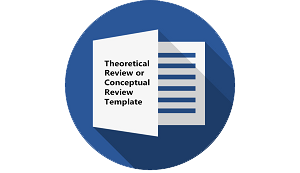ROLE OF PRAGMATIC STRATEGIES ON UNIVERSITY CAMPAIGN
DOI:
https://doi.org/10.30957/ijoltl.v7i1.689Keywords:
pragmatic strategies, branding, advertising, promotion, campaign, universityAbstract
This paper aims to provide information that pragmatic strategies is needed to offer university campaign. It is related to applied linguistics that make brand of universities known by many people. There are theory namely Ethos, Pathos and Logos that need to implement advertiser to make attention and awareness of the target audience. The results of this research can also help stakeholders determine the promotion and branding strategy of the institution such as higher education. A great university may not be known to many people, or it may only be known by certain people. Small universities could be even worse. This research is a marketing trial using google ads to increase the number of new student registrants at a State Islamic University (UIN Raden Mas Said Surakarta). Promotion technique is adopted the Aristotle’s rhetoric namely trend consideration (Ethos), fundamental consideration (Pathos) and technical consideration (logos). All of these techniques use a pragmatic strategy approach where the advertiser does not invite the target audience directly, but the university and the target audience are brought together based on core of supply and demand. If compared to the previous year, there will be a 41% increase in registrants in 2021. This strategy has a significant impact and is very influential. A metadata analysis was chosen because this research studied deeply three sources of statistical data including keywords trends, enrolment statistics and a campaign statistic.
Downloads
References
Al-Hindawi, F. H., & Al-Tamimi, S. K. (2012). Pragmatic Structure and Pragmatic Strategies Pragmatic Structure and Pragmatic Strategies of Commercial Advertisements. Iraqi Academic Scientific Journals, 1(12), 465–506.
Aristotle. (2006). Poetics and Rhetoric. Trans. S. H. Butcher & W. Rhys Roberts. New York:Barnes & Noble Classics.
Bhandari, R. S. (2017). Pay Per Click Marketing Strategies: A Review of Empirical Evidence. Journal of Industrial Distribution & Business, 8(6), 7–16.
Bilá, M., & KaÄmárová, A. (2014). PROSODY PRAGMATICS INTERFACE IN THE SITCOM DISCOURSE. Russian Journal of Linguistics, 4, 178–187.
Chen, L. (2011). Pragmatic Analysis of Fuzziness in Advertising English. Asian Culture and History, 3(2), 29–33. https://doi.org/10.5539/ach.v3n2p29
Cluley, R. (2017). Essentials of Advertising. London:Kogan Page.
Goddard, A. (1998). The Language of Advertising. London:Routledge.
Gogtay, N. J., & Thatte, U. M. (2017). An Introduction to Meta-Analysis. Journal of The Association of Physicians of India, 65(October), 78–85.
Gorchels, L. M. (1995). Trends in Marketing Services. LIBRARY TRENDS, 43(3), 494–509.
GrencÃková, A., Krajco, K., & Sokol, J. (2018). Use of Viral Marketing by Universities. Marketing and Branding Research, 5(2), 100–110. https://doi.org/10.33844/mbr.2018.60440
Haryani, S. (2009). A Pragmatic Analysis of English Advertisements: A Case Study. Bangun Rekaprima, 03(2), 22–32.
Jan, M. T., & Ammari, D. (2016). Advertising online by educational institutions and students’ reaction: a study of Malaysian Universities. Journal of Marketing for Higher Education, 26(2), 168–180. https://doi.org/10.1080/08841241.2016.1245232
Jin, Y., Shobowale, S., & Koehler, J. (2013). The Incremental Reach and Cost Efficiency of Online Video Ads over TV Ads. Google Inc. (2012), 1–17. http://research.google.com/pubs/pub40426.html
Kapoor, K. K., Dwivedi, Y. K., & Piercy, N. C. (2016). Pay-Per-Click Advertising : A Literature Review. The Marketing Review, 16(2), 183–202.
Maresova, P., Hruska, J., & Kuca, K. (2020). Social Media University Branding. Education Sciences, 10(3), 1–14. https://doi.org/10.3390/educsci10030074
Rabab’ah, G., & Abuseileek, A. F. (2012). The pragmatic functions of repetition in TV discourse. Research in Language, 10(4), 445–460. https://doi.org/10.2478/v10015-012-0004-x
Romanova, I. D., & Smirnova, I. V. (2019). Persuasive techniques in advertising. Training, Language and Culture, 3(2), 55–70. https://doi.org/10.29366/2019tlc.3.2.4
Saputri, D. (2018). Advertising Pay Per Click (PPC) Dengan Google Adsense Perspektif Hukum Islam. YUDISIA: Jurnal Pemikiran Hukum Dan Hukum Islam, 9(2). https://doi.org/http://dx.doi.org/10.21043/yudisia.v9i2.4767
Searle, J. R. (1979). Expression and Meaning: Studies in the Theory of Speech Acts. Cambridge University Press. https://doi.org/doi:10.1017/CBO9780511609213
Septianasari, L., Baihaqi, Y., Abqoriyyah, F. H., & Syaputri, W. (2021). Language of Persuasion in Online Marketing of Cosmetic Products: A Glance of Netnography in Pragmatics. Prasasti:Journal of Linguistics, 6(1).
Svetlana, F. (2014). The Role of Advertising in Promoting A Product [Centria University of Applied Science]. https://www.theseus.fi/bitstream/handle/10024/80777/Frolova_Svetlana.pdf
West, T. (2011). Going Viral: Factors That Lead Videos to Become Internet Phenomena. The Elon Journal of Undergraduate Research in Communications, 2(1), 76–84. https://www.elon.edu/docs/e-web/academics/communications/research/vol2no1/08west.pdf
Wróbel, S. (2015). Logos, Ethos, Pathos. Classical Rhetoric Revisited. Polish Sociological Review, 191(3), 401–422.
Yang, X., Sun, D., Zhu, R., Deng, T., Guo, Z., Ding, Z., Qin, S., & Zhu, Y. (2019). AIADS: Automated and intelligent advertising system for sponsored search. Proceedings of the ACM SIGKDD International Conference on Knowledge Discovery and Data Mining, 1881–1890. https://doi.org/10.1145/3292500.3330782
Za, S. Z., & Tricahyadinata, I. (2017). An Analysis on the Use of Google AdWords to Increase E-Commerce Sales. International Journal of Social Sciences and Management, 4(1), 60–67. https://doi.org/10.3126/ijssm.v4i1.16433
Downloads
Published
How to Cite
Issue
Section
License
Authors who publish with this journal agree to the following terms:
- Authors retain copyright and grant the journal right of first publication with the work simultaneously licensed under a Creative Commons Attribution-ShareAlike 4.0 International License that allows others to share the work with an acknowledgement of the work's authorship and initial publication in this journal.
- Authors are able to enter into separate, additional contractual arrangements for the non-exclusive distribution of the journal's published version of the work (e.g., post it to an institutional repository or publish it in a book), with an acknowledgement of its initial publication in this journal.
- Authors are permitted and encouraged to post their work online (e.g., in institutional repositories or on their website) prior to and during the submission process, as it can lead to productive exchanges, as well as earlier and greater citation of published work (See The Effect of Open Access).












